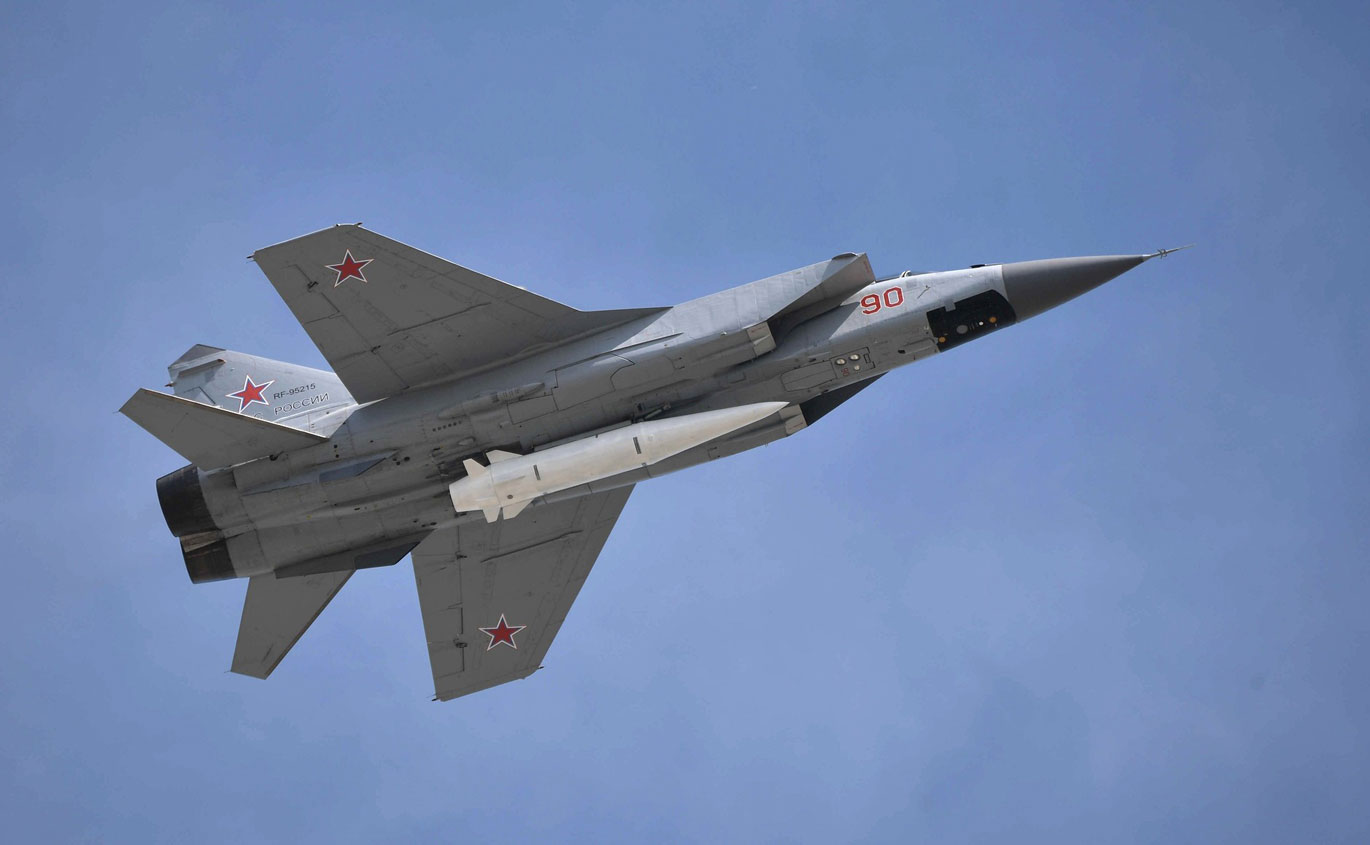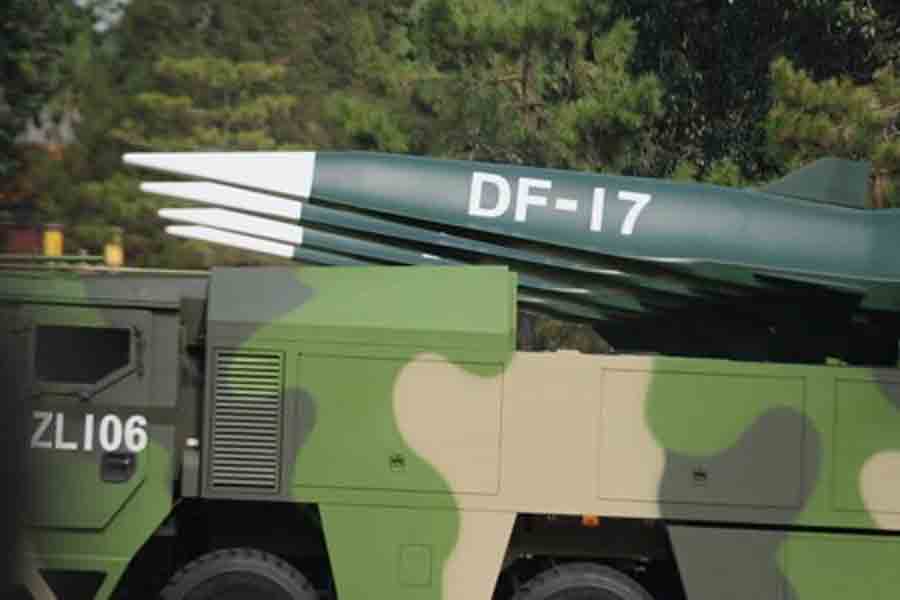What is the hype about hypersonic missiles?
Having used cluster munitions and thermobaric weapons, is the purported use of hypersonic missiles by Russia a deadly escalation in the Russia-Ukraine War?
Anita Hawser
20 March 2022

So Russia has reportedly become the first country to use a hypersonic missile in combat, or has it?
Over the weekend, the Russian Ministry of Defence claimed it had used Kinzhal aviation missile systems with “hypersonic aeroballistic missiles” launched from Crimea to target a base for supplying Ukrainian armored vehicles with fuel in combat areas in the south of Ukraine.
Having used cluster munitions and thermobaric weapons, is the use of hypersonic missiles a deadly escalation in the Russia-Ukraine conflict? Debalina Ghoshal, a non-resident fellow with the Council on International Policy at the East West Institute, says there is no difference between the destruction caused by a normal missile and that resulting from a hypersonic missile. “The hype about hypersonics is the speed at which the missile can reach its target and because they are so fast they are simply difficult to be intercepted,” she explains.
“It is not just an attack, but I feel a way to also showcase Russian weapon systems in the defence market. With the introduction of hypersonic systems, the concept of blitzkrieg only gets more technically advanced and more lethal given the incapability of normal air and missile defence systems to intercept them.”
Hypersonic weapons operate at near or above five times the speed of sound (Mach 5) within the upper atmosphere at altitudes of 80,000–200,000 feet. Nations with operational hypersonic weapons will be able to engage targets at longer ranges and with shorter response times, resulting in far enhanced effectiveness compared with current cruise missiles and fifth-generation long-range stand-off air launched weapons.
They represent a new frontier in military capability with Russian and Chinese hypersonic efforts having caught the West unawares, says Atul Chandra, an India-based aerospace and defence journalist. Russia has already operationalised its ‘Avangard’ and ‘Kinzhal’ hypersonic weapons and China has also announced operational deployments of the DF-17 hypersonic weapon. Other nations pursuing development of hypersonics include Japan, Australia, Korea and India.
But the CSIS Missile Defence Project says that Russia’s designation of the Kinzhal as a “hypersonic” missile is somewhat misleading, as nearly all ballistic missiles reach hypersonic speeds (i.e. above Mach 5) at some point during their flight. It says Russia likely developed the unique missile to more easily target critical European infrastructure (airfields, warehouses, command centres) and to counter US missile defence systems such as the Terminal High Altitude Area Defense (THAAD) missile defence battery. The Kinzhal is also said to have antiship capabilities, which CSIS says could also pose a threat to US and NATO aircraft carriers.
In a report on Countering the Hypersonic Missile Threat, Tom Karako, Senior Fellow, International Security Program and Director, Missile Defense Project at CSIS and Masao Dahlgren, a Research Associate, Missile Defense Project, state: "Hypersonic weapons combine the speed of ballistic missiles with the maneuverability and detectability challenges of cruise missiles, leaving little time to react. In the past five years, Russia, China, and others have accelerated their development of hypersonic missiles to threaten US forces in the homeland and abroad. The current Ballistic Missile Defense System, largely equipped to contend with legacy ballistic missile threats, must be adapted to this challenge."
Russia leads the hypersonic arms race, while the US plays catch-up
In the hypersonic arms race, there is no question that Russia is the indisputable leader having gained valuable operational experience with the Avangard and Kinzhal. Russia pulled of a major surprise when it put into service its first regiment of Avangard hypersonic missiles in December 2019 with NPO Mashinostroyenia starting series production the same year.
The Avangard nuclear boost-glide vehicle is carried on Russian UR-100N UTTKh Intercontinental Ballistic Missiles (ICBMs). “A rocket is used to accelerate its payload to high speeds in a boost glide system,” Chandra explains. “The payload then separates from the rocket and glides unpowered to its destination.”
As early as February 2019, MiG-31s equipped with the Kinzhal high-precision hypersonic missile were on experimental combat duty and had completed more than 380 patrol sorties over the Black and Caspian Seas. Flight and design tests for the naval hypersonic missile "Zircon" also built by NPO Mashinostroyenia are also in the pipeline. The new hypersonic weapon will be deployed on Russian nuclear submarines and warships and has already achieved speeds of Mach 8 in design trials.
China unveiled is DF-17 hypersonic weapon in October 2019 at its National Day parade. “The D-17 is a short-to-medium range weapon and will be used to secure Chinese interests around the South China Sea, the Taiwan Straits and Northeast Asia,” says Chandra. Media reports in China have shown the development of a covered Transporter Erector Launcher (TEL) which would make the weapon more transportable over longer distances and less susceptible to detection.
In October 2020, images emerged of a Chinese H-6N bomber purportedly carrying a DF-17. Up to six hypersonic weapons can be carried on a single H6-N bomber. While the DF-17 is a hypersonic glide vehicle, China is also developing scramjet technology which will provide greater range and manoeuvrability.
The US, on the other hand, is racing to play catch up. In the US Department of Defense's fiscal 2021 budget proposal, $3.2 billion was allocated towards hypersonic weapons development. The US DoD plans to have a layered hypersonic defence capability (first terminal followed by glide phase) by the mid to late 2020s. A reusable hypersonic vehicle capability is planned for the early to mid-2030s.
However, the US hypersonic weapons programme suffered a setback when Lockheed Martin's long-range hypersonic missile, the AGM-183A Air Launched Rapid Response Weapon (ARRW), failed a demonstration on April 5th 2021. The test missile was unable to complete its launch sequence and remained on the Boeing B-52H Stratofortress test aircraft, which then returned to base.
Some of the information in this article is adapted from an earlier article we published on Hypersonic Missiles by Atul Chandra.
Hypersonic Missiles: Who is in the lead?
